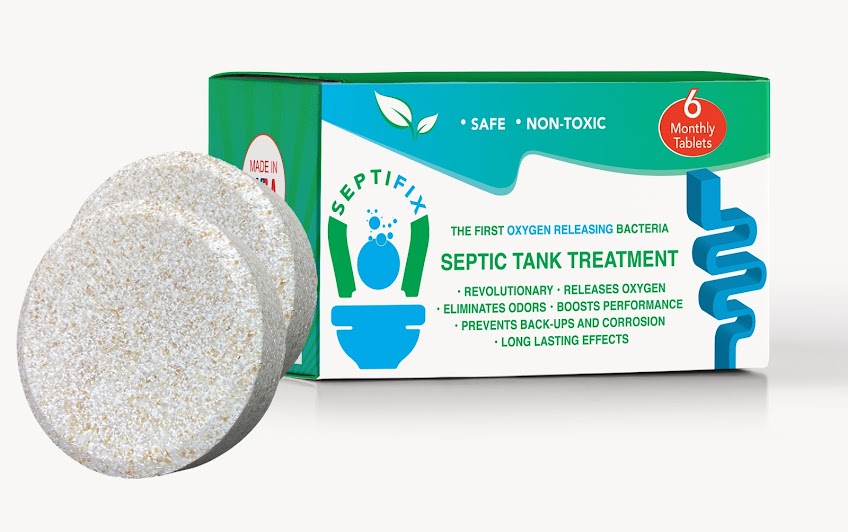Where To Put Your Septic System On Your Property
If your home or business property is not connected to a centralized municipal sewer system, you will need an alternative sewage treatment system in place. The most common system is the septic tank-and-drainfield system. In design and function, septic tank systems are quite simple. However, there are building codes and health considerations which must be heeded when installing your dedicated on-site septic system. These regulations and property topography determine where you should place your septic tank.
Get Local Septic Tank Service Here
There are several factors that need to be considered before deciding on the right spot to install a septic system. Aside from guidelines mandated by local government units, there are conditions required by septic components for the whole system to function optimally. Primarily, site conditions will determine potential locations for a septic tank. Right off the bat, septic tanks need space to be buried in, typically 8 feet or more of soil (although, special “low boy” tanks can be placed in as little as 4 feet of soil while advanced wastewater treatment systems can be above-ground entirely). And while working with a certified septic service professional is the best way to ensure that the installation process is done properly in a safe and sanitary location, it pays to be educated about where best to put your septic tank.

Before proceeding to the whole undertaking of installing your septic tank, the very first thing to accomplish is to check your local regulations about septic installation. Septic system regulations vary depending on your property’s location. A good place to start is in your local regulating agency where you can review the installation policies for your jurisdiction and where you can secure the necessary permit(s). In some states, this process begins with filing a Notice of Intent (NOI) to Discharge. This is a crucial step as the last thing you would want to happen is to install a whole system that will eventually prove to be a hazard to the environment or start digging without reference and hit a utility line (like cable, gas, power, etc.). Not only can the latter delay the installation of your treatment system, but it can also be extremely dangerous – not to mention very costly. Because there are no set-in-stone rules about how deep into the ground various utilities need to be buried, you should err on the side of caution and have a professional come out to mark the area. In most areas, a simple Call811 is all you need to get you started.
Get Local Septic Tank Service Here
After you get all the necessary permits and guidelines, the next thing to accomplish is to examine your property’s terrain. Ideally, you should place your septic system on level ground (if possible, high ground) so you can avoid flooding and seeping. Know to avoid steep slopes and areas dense with tree roots or other obstructions. Also, take into account any surrounding structures (such as utility sheds, garages, and the like) or power lines that may get in the way of heavy equipment that you will likely be bringing in for the installation process.
Another element to consider is the soil quality in the potential septic tank and drain field location. In summary, wastewater travels from your home or building and into the septic tank, where it is separated from solid waste matter. The resulting effluent is then released into the surrounding drainfield (also referred to as a leach field). You will need soil that will not allow the tank to shift within it, especially in wet conditions. For your drainfield, this essentially functions like a large soil filter, so it’s crucial that the soil in your property is characteristically absorbent. The best type of soil for this type of septic system is sandy, undisturbed soil. Try to avoid areas of dense clay or bedrock, as these can prevent efficient water flow. Also steer clear of coarse, gravely soils that could drain too rapidly. A percolation test will help you determine the quality of your soil.
Often, septic tanks are located close (10 feet away, on average) to the facility it serves. This is applicable in areas where there is space available for the tank at an adequate soil depth. However, at a “difficult” site such as a house built on a rock cliff or on a steep slope, the tank may have been located at some distance. A possible septic tank location is an area which is not dense with mature trees.
Septic tanks and drainfields are typically found downhill from the facility it serves. Unless a pumping system is in place (you should be able to find switches, alarms, wires for such), then a septic tank may be located uphill, relative to the building connected to it. Typically, septic systems rely on gravity for much of its sewage movement, this is why downhill is more common. A septic tank is ideally not far and uphill from the home or building.
A septic tank’s prescribed distance from the house or building it serves varies from one area to another, but the typical minimum distance is 10 feet. In many cases, the building contractor excavates for the septic tank and system at the same time he digs the footings for the house. On the other hand, it can happen that some contractors will place the septic tank much closer to the structure because doing so is easier and requires less piping. As the property owner, you are ultimately responsible for the placement of your septic tank, so it is just wise to monitor the septic tank system installation as your home or building is constructed. For more specific answers to the question of septic tank distance, you will need to consult with your local codes/regulations agency.
If you have decided to undertake the installation of your septic system yourself, bear in mind that there are some major precautions you will need to take for this kind of project. Besides the administrative procedures you need to accomplish before you dig the hole for the septic tank (local utilities, local government permits, call to 811), you will need to safeguard your environment, your neighbors, and yourself. After securing the necessary permits, check with your local utilities as you would hate to sever a gas line, water line, phone line or electrical cable in the excavation. An accident like these would not only be dangerous, it can be pretty expensive. Now, once you have the hole all dug up, double the caution. Cordon off the excavation site as the walls of the hole can cave in, especially in sandy or loose soil conditions. Fatal injuries can come of falls into septic excavations. Also take note that a concrete septic tank can weigh as much as five tons. You had better leave this undertaking to professionals, in this case. Do not try to maneuver a concrete septic tank unit into the hole yourself. It is best to have the hole ready when the concrete unit is delivered and have it placed directly into position by septic service providers who are adequately equipped and skilled.
In general, septic effluent must be disposed of on the property from which it originates. In order for this to happen effectively, efficiently, and most of all, safely, your septic system components need to be situated in locations with favorable conditions – not just for the system’s components but for all that surrounds it.
Where Best to Put Your Drainfield
To review, wastewater from the household or business facility travels through the main sewer line into the septic tank where bacteria digest organic matter and separate solid waste from the liquid. After that, the wastewater (now effluent) leaves the septic tank and is discharged to a drainfield (also known as leach field) where further filtration of pollutants in the wastewater happens. The filtered wastewater is then distributed through some perforated pipes for treatment. This said the drain field is an integral part of your on-site sewage system. If you are about to install a septic tank system in your property, consider these factors when choosing the perfect location for the drain field.
Area with low elevation. Wastewater is able to leave the septic tank and travel to the drainfield typically with the help of gravity or, in some cases, pumps. A low elevation area that’s just below the level of your septic tank is ideal so that gravity can effectively push the wastewater to the drainfield. If you opt to place the drainfield in a higher area, you will likely need to invest in a lift station or pump to accomplish the flow of wastewater. Utilizing a pumping mechanism will, of course, add to the cost of septic system installation.
Unused area. Once a drainfield is installed, you won’t be able to utilize that part of the property for anything else. Plants growing on this absorption area can block the perforated pipes and cause flooding of wastewater in the drainfield or, worse, back up in your sinks and toilets. Select an area that can be utilized only for the specific purpose of holding wastewater that comes from the septic tank. Commonly, a good spot is on the far end of the property where it is out of the way and will not impede any future property improvement projects.
Drainfield size. The number of occupants in your household or building will be a determining factor when it comes to drainfield design. In other words, the size of the drainfield you need for a house of five will not be the same for one with only three occupants. This aspect of the installation is ideally decided with the advice from septic professionals as building, say, a smaller drainfield than is needed will cause overloading of the system, leading to flooding and other plumbing problems. It is a factor, too, if you regularly host parties or frequent extended family visits at home. You will need a bigger space on your property for the drainfield. To further optimize the performance and lifespan of your drainfield, be sure to have your septic tank pumped regularly.
Septic Tank Placement Regulations
Get Local Septic Tank Service Here
Besides environmental conditions to consider in determining the placement of a septic system, there are mandated clearances prescribed for various onsite wastewater treatment system components. Local governments will specify minimum distances from buildings, property boundaries, lakes, streams, wells, and so on. Different jurisdictions will have area-specific guidelines, so it is best to consult with your local departments for such. Below are some general or average regulations.
- Common guidelines require clearance distance of at least 50 feet between a well and a septic system tank and a minimum of 150 feet between a well and a septic drainfield.
- Drainfields, soakbeds, soil absorption systems above high water tables need to have a minimum distance from a septic tank of about 4 or 5 feet to 10 feet or more. The allowable depth from the bottom of drainfield trenches to seasonal high groundwater level must be higher for coarse gravely soil conditions and may be as little as 5 feet in fine soils passing the #200 sieve test.
- For private water wells or well suction line (non-potable water), the septic tank should be at a distance of at least 50 feet.
- On the other hand, for public water wells or drinking water intakes, the distance of a septic tank should be at least 200 feet.
Again, note that clearance distances from any septic system component such as the septic tank, drainfield, soakaways, soakbeds, or other terms for sewage effluent disposal will vary across jurisdictions. The variances are determined by:
- Soil type. Rocky or sandy soils require more setback distances from well to septic components.
- Soil grade. Also slope and location of a water well that is down-slope from the septic system.
Smaller residential sewage treatment units have clearance distances that are typically the same as those prescribed for septic tanks. The distances mentioned above are for conventional on-site waste disposal systems operating on the premise that effluent is being disposed of after minimal treatment such as is received by a septic tank or cesspool.
More advanced on-site wastewater treatment systems, on the other hand, allow a significant reduction in these clearances, depending on the level of treatment performed. Note that drainfield clearance distances are typically measured as from the site to the nearest edge of the drainfield area or trench, soak-away bed, mound, or raised bed, depending on septic design type.
At this point, the mere task of determining where to place your septic tank and other components might seem like a daunting undertaking. After you’ve considered the applicable local mandates on clearance distances, you likewise need to take into account the actual soil or rock conditions in your property along with said regulations. Your trusted septic professional provider should be able to help you substantially with this part of the endeavor.
The Cost of Installing a Septic Tank
Septic systems are virtually miniature waste treatment plants. These systems are most common in rural areas, where public sewer access is not readily available. There are several types of septic systems, but the most common is the septic tank-absorption field system. As we have earlier discussed, in this type of system waste leaves the facility through a main sewer pipe and travels to the septic tank. Waste stays in the tank long enough for the solid waste matter to settle out as sludge and for grease and oils to float to the surface as scum. In the tank, specially-designed outlets hold back sludge and scum, while allowing the clear middle layer (effluent) to leave and travel to the drainfield. Here, microbes in the soil digest or remove most contaminants from the effluent before it reaches groundwater.
The cost to install a septic tank system varies widely, mainly depending on your property’s location. On average, a standard or conventional gravity system for a 3-bedroom household on a level site with favorable soil would likely cost from $1,500 to $4,000 and above. The size of the septic tank and of the drainfield needed in each system depends on the size of the home or facility and the number of occupants. For example, a 6-bedroom home with more occupants requires a much larger system than a 2-bedroom home does.
The national average cost for septic tank installation falls anywhere between $3,000 and $9,000. To start you off with an idea, the cost to install a typical 1,000-gallon tank for a 3-bedroom home, for instance, can range anywhere from $2,000 to $5,000, including the cost of the tank itself, which is anywhere between $600 and $1,000. But before the actual installation of the septic tank can begin, you are required to secure applicable permits from your local health department. Permit fees amount to around $300.
The first step to determining the cost of installing a septic system is to contract your trusted septic professional for consultation and project estimate. Right up there on the breakdown of cost is the septic tank. Here is a quick reference guide:
Property Size to Tank Size: A quick guide
| Tank Size (in Gallons) | Size of House or Establishment | Tank Cost | |
| 1,000 | 3 bedrooms | $600 to $1,000 | |
| 1,200 | 5-6 bedrooms | $1,200 to $1,600 | |
| 2,000 | small building (about 14 occupants) | $1,800 to $2,300 | |
| 3,000 | large building (>14 occupants) | $2,900 to $3,900 |
Tank Type: A quick guide
| Tank Type | Cost | |
| Concrete | $750 to $2,000 | |
| Fiberglass | $1,600 to $2,000 | |
| Plastic | $850 to $1,900 |
The tank is just the first line item in the installation list. The type of septic system you opt to install will, of course, factor significantly into the total cost.
Types of Septic Systems: A quick guide to Costs
| Type of Septic System | Average Cost | |||
| Conventional Systems | ||||
| Conventional Systems | Gravity or Anaerobic | $3,500 | ||
| Pressure Distribution | $6,500 to $9,800 | |||
| Alternative Systems | Aerobic Treatment Unit | $10,000 | ||
| Mound | $15,000 | |||
| Sand Filter | $5,500 to $9,500 |
How to Hide Your Septic Tank
As functional as septic systems are, they don’t always fit in with the landscaping of most, if not all, properties. Tank lids and other protruding elements of a septic system are often unsightly. There are several things you can try out to “hide” your septic tank lids (or other visible components) in plain sight. You may cover them with lightweight objects like a plastic rock, a bird bath or a planter box – as long as you disguise them without causing damage to them. Below are a few ideas of how you can safely disguise your septic.
Plant grass around the septic tank lid. Natural greenery will always add an aesthetic quality to any surroundings, yet if you do decide to plant grass around your tank, you should remember never to plant grass directly over the lid of your septic tank. Doing so will make future maintenance or inspection more tedious. Tallgrass planted around your lid will be a stylish touch to a garden and will successfully hide your septic tank lid.
Light lawn ornaments. A plastic rock, a fiber plastic statue, a decorative birdbath, or a lightweight planter box over the septic tank lid are some ideas. Just be careful not to place anything too big or heavy. Go with something that can easily be removed, but not so easy that children can do so.
A mosaic lid cover. Rather than masking the septic tank lid, some people would opt to decorate the lid itself, making it more aesthetically appealing. You may create a mosaic design with small tiles over your concrete septic tank lid. Mosaic designs are easy to do and can be very stylish.
Paint the septic tank lid. Painting the lid as the same color as its surroundings will easily help it blend in without impeding its access and functionality. This is the quickest and fuss-free solution to disguising your septic system.
When trying to “dress up” your septic tank, there are some things you have to avoid. Remember to NOT:
- Plant grass directly above the septic lid. Placing anything permanent over your septic tank will make a future inspection, pumping, and other maintenance procedures quite difficult. You will need to dig up the grass each time. It is a better idea to cover your septic lid with something that can easily be removed.
- Plant a vegetable garden within proximity. Planting a garden is always a good way to improve any property’s appearance, but a vegetable garden to mask your septic system is not exactly a great choice. The waste from your system can very easily wind up in your patch of vegetables before it’s been properly treated, leading to contamination and serious health risks.
- Plant trees. Planting trees near your septic system can cause damage to it. Tree roots can infiltrate the pipes or get tangled up in your septic system, damaging it and disrupting its normal flow. Keep trees at least 25 feet away from your septic tank and drain field.
- Build a fence. Building a fence can cover up your septic tank, but building the fence posts too deep into the soil could damage your septic tank and affect the flow of wastewater. Also, if these posts are planted deep into the drain field, it can compact the drain field soil, rendering it ineffective.
What’s great is you can get creative in disguising your septic tank lid. The only thing to remember is that the lid to your septic tank needs to remain conveniently accessible for what is hopefully periodic and regular maintenance procedures, plus emergency repairs that you might need down the line.
Septic Tank System Alternatives
Conventional septic systems involve buried tanks that release wastewater and sewage into sand and gravel drain fields. About a quarter of American households relying on on-site sewage treatment employ this conventional method. But if your property’s original septic system has failed or if your location is in an area where this type of sewage treatment is not ideal, alternative waste disposal methods may have to be considered.
Filtration Systems. When there is not enough property space for a drainfield that’s necessarily large enough to properly process the amount of waste, an option would be to install additional filtering systems. One such system employs a re-circulating sand filter that passes liquid waste through sand filtration several times before releasing it into the drainfield. Similarly, peat filtration is a popular reinforcement to traditional septic systems. Before the wastewater flows into the drainfield, it passes through a 3-foot stretch of sponge-like peat. Here, waste is soaked up and is spread out more evenly. Waste breaks down as it works its way to the bottom of the peat layer and percolates through the soil.
Aerobic Systems. The conventional septic tank breaks down pathogens in waste products with naturally-occurring anaerobic (oxygen-hating bacteria). The partly-treated wastewater then travels to the drainfield, where aerobic (oxygen-loving) bacteria in the soil further digests it. This system is ideal for properties where the soil is not permeable enough (or is too permeable, for that matter). In an aerobic system, waste is sent to a second tank that hosts aerobic bacteria which will break down pathogens before the effluent is allowed to travel to the drainfield. In this second tank, an aspirator is utilized to inject oxygen and promote aerobic bacterial population.
Unconventional Toilets. There are two alternatives to the conventional flush toilet/septic tank system that can be considered: the composting toilet and the incinerating toilet. Both types are well-suited to locations where the soil is not permeable enough for conventional drainfields, as well as areas where water is scarce. Both the composting toilet and incinerating toilet use little, if at all, water for waste disposal.
- In a composting toilet, aerobic bacteria and fungi reduce human waste down to 30% of its original mass. Fans or heaters evaporate liquid waste, while solid waste decomposes into a nutrient-rich product called humus. This resulting compost-like material can either be buried in the ground or hauled away by professional disposal services.
- The incinerating toilet is a self-contained, free-standing unit that requires no water. There are two types of incinerating toilets: electric and natural or bottled gas. Both models use high heat to burn solid and liquid waste into sanitized ash and they then require a vent to the facility’s exterior.
Just a couple of quick tips: you will want to turn on your water service before having your tank installed. This is important because you will need to fill the tank with water as soon as it is in place. This a wise precautionary move. In the event of sudden rainfall, a swell in the groundwater could cause an empty septic tank to float out of the ground. If this ever happens, getting the tank positioned back into place and repairing any damages to piping or to the tank itself can be quite expensive. Remember to mark the location of your septic tank after installation, especially the access hatch. This aids you and future owners, should you one day decide to sell the property.
We touched on just a few of the most important considerations when installing your dedicated on-site septic system. There is a myriad of elements to consider and decide on once you’ve made up your mind about this installation project. Property space, property conditions, construction materials (what kind and how much), the system’s overall design (how large of a septic tank and drainfield), where should you and are you allowed to place it, and the list goes on. It is quite a daunting task for any DIY-er.
A great solution to all this is to call in the pros. Contract a trusted septic service provider.
Get Local Septic Tank Service Here
Get A Professional Septic Install Quote
[us_map]
https://inspectapedia.com/septic/Septic_Tank_Locations.php
https://paradisevalleyseptic.com/where-to-put-your-septic-tank/
https://www.hunker.com/12003961/how-far-should-you-put-the-septic-tank-from-the-house
https://inspectapedia.com/septic/Septic_Tank_Depth.php
https://inspectapedia.com/septic/Septic_Clearance_Distances.php#Table_1
https://inspectapedia.com/septic/Septic_Clearance_Distances.php#Table_2
https://inspectapedia.com/septic/Septic_Clearance_Distances.php#Table3
https://inspectapedia.com/septic/Septic_Clearance_Distances.php
https://www.zillow.com/blog/cost-to-install-septic-system-150191/
https://blog.adbseptic.com/blog/the-dos-and-donts-of-hiding-your-septic-tank
https://homesteady.com/4984632/alternatives-to-septic-tank-systems
https://inspectapedia.com/septic/Septic_Clearance_Distances.php#Table4











